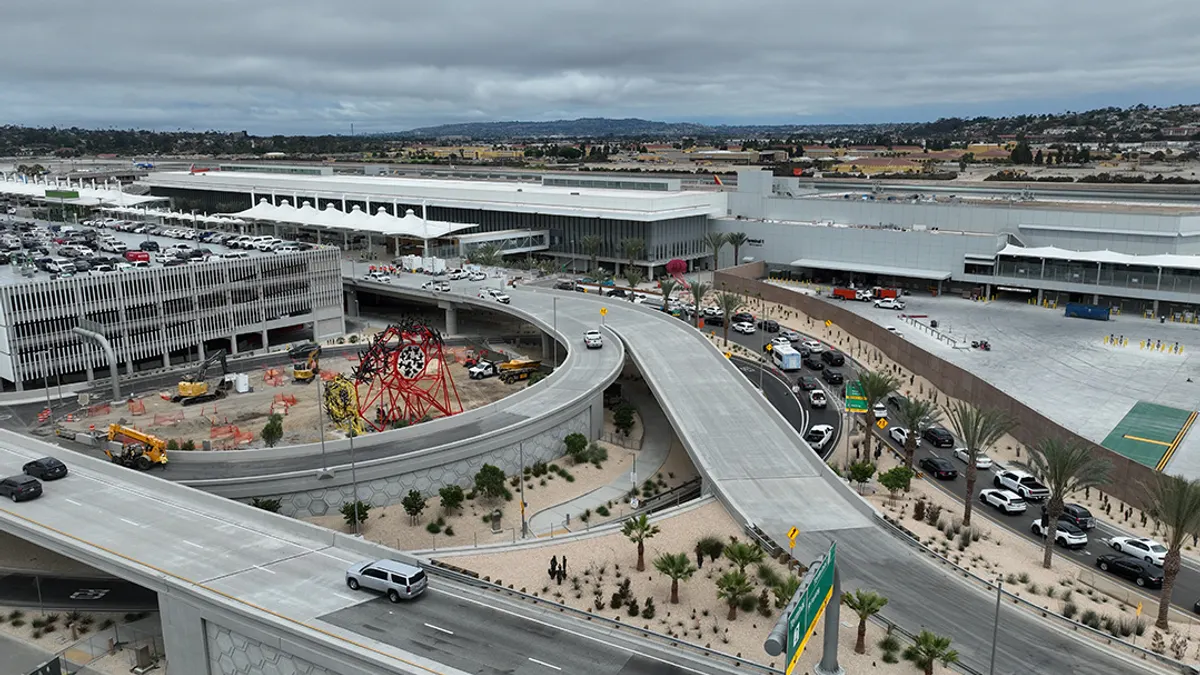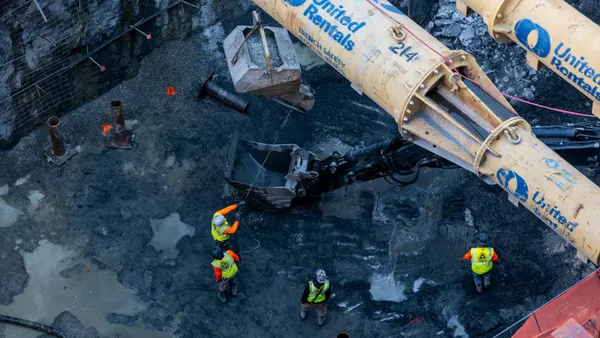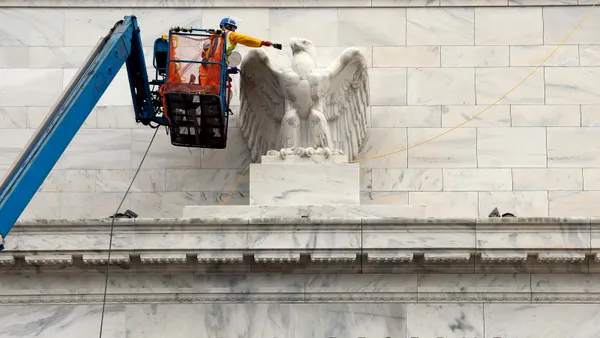Dive Brief:
- The value of February construction starts fell 3% from January to a seasonally adjusted rate of $708.1 billion, according to Dodge Data & Analytics, the second consecutive the value fell after December's upwardly revised gain of 12%. On a 12-month moving average, starts for the year ending February 2018 were up 2% from the year ending February 2017. But January and February starts were down 7% from the same period last year due to a fewer number of large projects.
- The lack of non-building starts was once again the driver of February's overall decline, with that category experiencing a 23% drop. Both residential and nonresidential starts increased, up 1% and 5% respectively, from January to February, albeit not enough to reverse the general downward trend. Residential received a boost from a 7% uptick in multifamily starts, whereas data center and large office projects contributed to the upswing in nonresidential.
- The February Dodge Index was 150, down four points from a January reading of 154. Dodge chief economist Robert Murray said that a dearth of large electric utility and public works projects contributed to 2018's reduced activity thus far, but the tax reform and a new stream of bond-based projects indicate that the construction industry is still expanding, just at a slower pace, despite "headwinds" like rising material prices, tighter lending policies, inflation worries, lack of a finalized infrastructure program and the growing federal budget deficit.
Dive Insight:
A more enthusiastic read on the industry came from the Associated Builders and Contractors' fourth-quarter 2017 Construction Backlog Indicator report released this month. Projects in the nonresidential construction pipeline increased 2.25% to an all-time high of 9.67 months. Also breaking backlog records were the Northeast region (10.67 months), the commercial/industrial segment (10.1 months), and contractors with revenue of $30 million to $50 million (11.89 months).
Even so, Anirban Basu, the ABC's chief economist, pointed to many of the same potentially negative factors that Dodge did in his analysis of what the future holds for contractors. One of the concerns Basu and Murray share is the effect of President Donald Trump's 25% steel tariff and 10% aluminum tariff, both of which went into effect today. Industry organizations have been quick to point out that construction material prices were on the rise before the tariffs announcement and that the resulting higher costs could cause owners to nix plans for new development or bust budgets for projects already underway.













